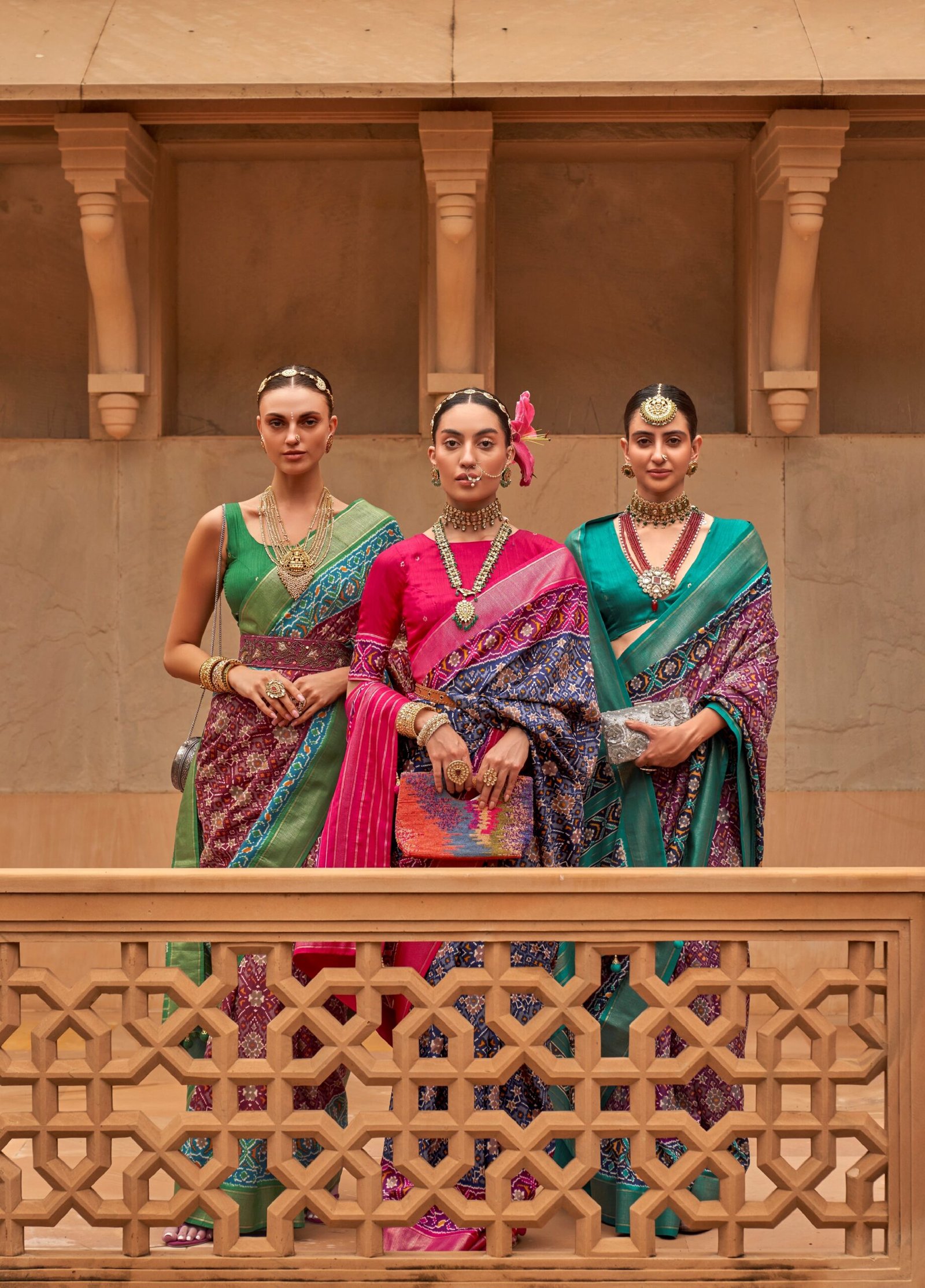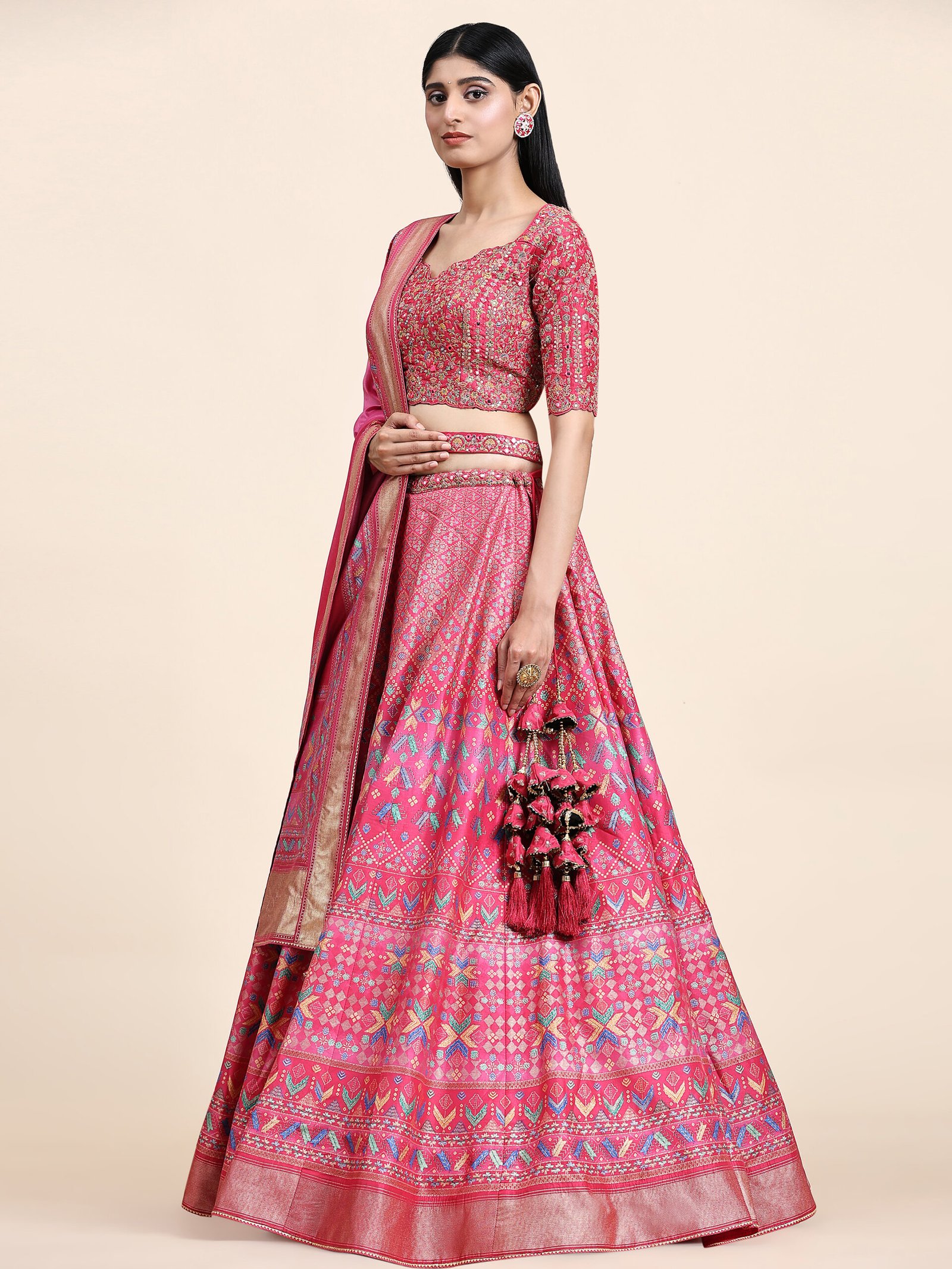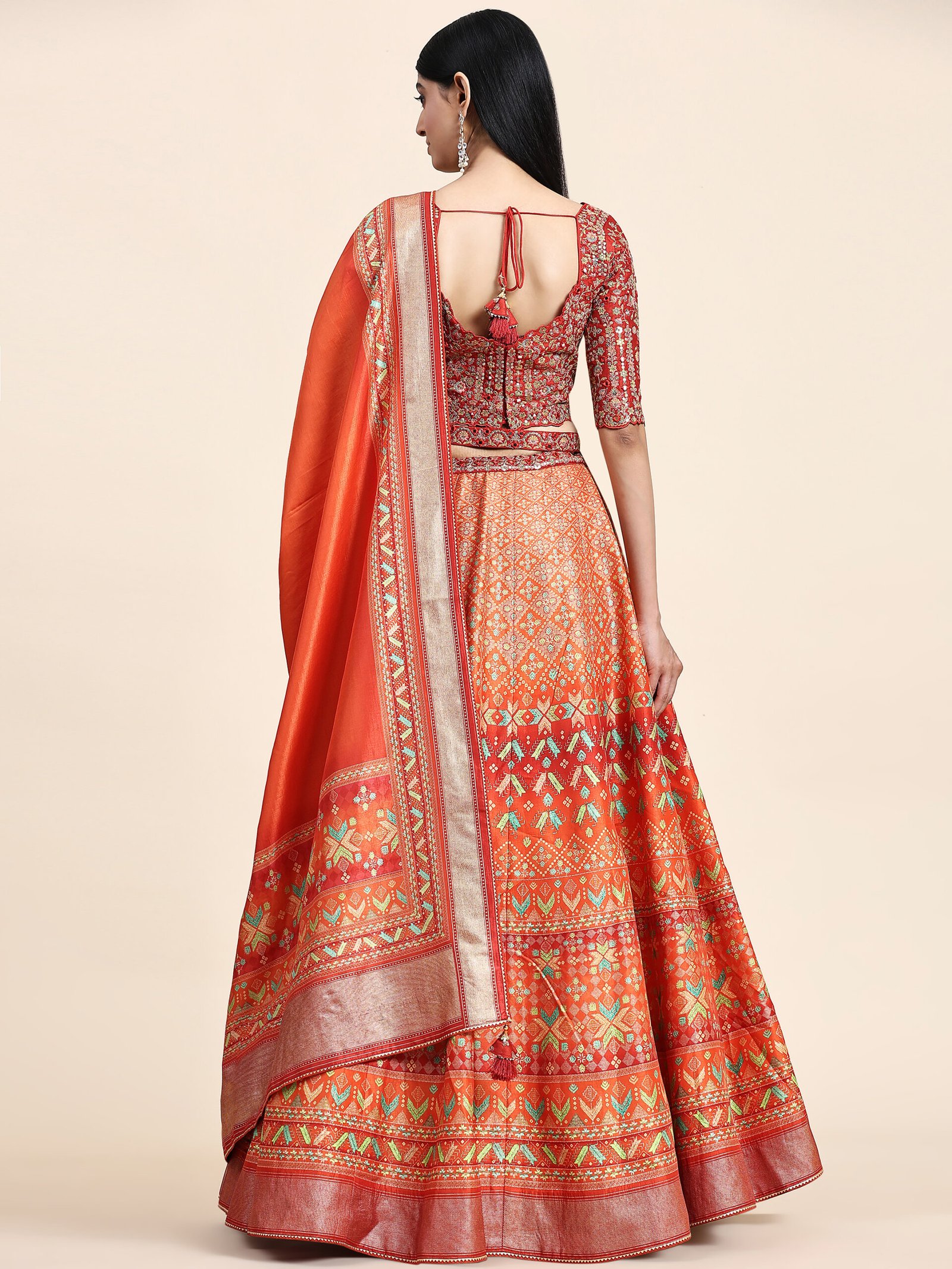India, a land of rich heritage and diverse cultures, boasts a fascinating tapestry of traditional fashion for women. The clothing, accessories, and jewelry worn by Indian women are not just garments; they are a reflection of the country’s deep-rooted traditions, regional diversity, and a testament to the enduring elegance of Indian culture. In this exploration of traditional fashion for women in India, we will embark on a journey through time and tradition to discover the captivating world of sarees, lehengas, salwar kameez, jewelry, and more.
The Timeless Saree:

The saree , an iconic symbol of traditional Indian fashion, is the epitome of grace, versatility, and enduring beauty. This traditional attire consists of a long piece of fabric, typically ranging from 5 to 9 meters in length, draped elegantly around the body. What makes the sari truly special is its adaptability; it can be draped in various ways, often varying from region to region and occasion to occasion.
Saree for women come in a dazzling array of fabrics, colors, and designs. The silk saris of Varanasi, the handwoven treasures of Banarasi silk Saree, the vibrant and lightweight silk-cotton blends from Bengal, and the intricate Kanjivaram silk saree from Tamil Nadu are just a few examples of the sari’s diverse avatars. The embellishments, which include intricate embroidery, hand-painted motifs, and zari work (metallic thread embroidery), add to the sari’s aesthetic grandeur.
Lehenga Choli: Elegance in Motion



For weddings and special occasions, the lehenga choli is the preferred choice for many Indian lehenga choli for women. This traditional ensemble consists of three elements: a midriff-baring blouse (choli), a long flared skirt (lehenga), and a matching or contrasting dupatta (scarf). The lehenga choli is not merely clothing; it is a symbol of grandeur and celebration, often adorned with ornate embellishments and a vivid color palette.
Salwar Kameez: Comfort Meets Tradition
The salwar kameez, often referred to as the “salwar,” is a versatile and comfortable outfit for Indian women. It comprises a pair of loose-fitting pants (salwar), a long tunic (kameez), and a matching or contrasting dupatta. This outfit strikes the perfect balance between style, comfort, and modesty, making it a popular choice for daily wear. Salwar kameez comes in various styles, from simple and practical for daily use to intricately embroidered outfits for special occasions.
Traditional Attire for Men:
While focusing on women traditional fashion, it’s important to recognize that Indian men have their own array of traditional clothing that reflects cultural heritage and social status. The sherwani, a long, knee-length coat with intricate embroidery, is a regal choice for special occasions and weddings. It is typically paired with churidar pants and a turban, exuding an air of grandeur. Meanwhile, the kurta-pajama, a combination of a knee-length tunic and straight-cut pants, is a simpler and more casual outfit often chosen for daily activities and events. Traditional footwear, such as juttis (embroidered leather shoes), mojaris (curled-toe shoes), and kolhapuris (strappy sandals), complete the traditional look for men.
The Importance of Turbans:
Turbans are more than just headgear in India; they are symbols of pride, honor, and cultural identity. The style, color, and material of a turban can vary significantly from one region to another. In Rajasthan, men often wear turbans with elaborate folds and bright colors, while in South India, a simple white or saffron dhoti is more common. The choice of turban carries deep cultural and regional significance.
A Kaleidoscope of Fabrics:
India is renowned for its vast array of textiles. From the luxurious silk saris of Kanchipuram to the vibrant and lightweight Bandhani and Patola fabrics of Gujarat, each region has its specialty. Traditional weaving techniques, dyeing methods, and intricate patterns make Indian textiles a treasure trove of artistry.
Traditional Jewelry: A Glittering Heritage
Indian traditional jewelry is celebrated for its intricate designs and cultural significance. Women adorn themselves with a wide range of jewelry, including necklaces, bangles, earrings, nose rings, anklets, and more. Each piece often carries cultural or symbolic meanings, and gold and gemstones are prominently featured in Indian jewelry. Jewelry shopping is a significant aspect of Indian weddings and celebrations, and it is an opportunity to showcase one’s cultural identity and style.
Footwear and Accessories:
Traditional footwear, like juttis and mojaris, is not only functional but also artistically crafted. These intricately designed shoes add a touch of elegance to any traditional outfit. Accessories like bindis (forehead decorations), bangles, and ornate hairpins are essential elements of traditional Indian fashion, adding a finishing touch to the overall look.
Regional Diversity:
One of the most captivating aspects of traditional fashion in India is its regional diversity. Each part of the country has its unique styles, fabrics, and clothing traditions. In Punjab, colorful Phulkari embroidery is celebrated, while in Kerala, the white and gold-bordered sarees known as Kasavu are popular. The northeastern states have their own distinctive tribal attire, and the western state of Rajasthan is known for its colorful and ornate clothing.
Festive Attire:
Festivals and special occasions are the perfect showcases for India’s traditional fashion. During Diwali, the Festival of Lights, people adorn themselves in bright and colorful outfits to celebrate. During Eid, traditional Islamic clothing, such as shalwar kameez and the burqa, is commonly worn. The garments worn during these festivities are more than just clothing; they carry deep cultural and religious significance.
Trends and Modern Influences:
While traditional clothing remains deeply rooted in Indian culture, modern fashion trends have not been left behind. Many designers are blending traditional elements with contemporary fashion to create unique styles that cater to a diverse audience. Fashion weeks in major cities like Mumbai and Delhi serve as platforms for both traditional and modern fashion to shine, showcasing the creativity and innovation of Indian designers.
In conclusion, traditional fashion for women in India is a vibrant tapestry of culture, history, and artistry. It goes beyond mere clothing; it is an expression of identity and heritage. The rich variety of clothing styles, textiles, and accessories in traditional Indian fashion is a testament to the country’s cultural wealth. This diverse and ever-evolving fashion landscape continues to be a source of pride and a reflection of India’s remarkable heritage.

